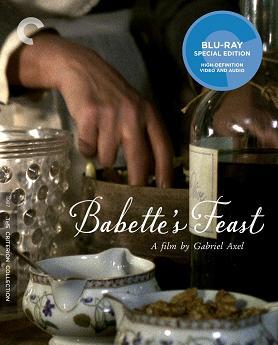The worlds of the physical and the spiritual collide and embrace in grand and glorious harmony in Gabriel Axel’s Babette’s Feast. With a carefully paced and beautifully modulated story adapted from Isak Dinesen and a terrific array of fine actors underplaying to tremendous effect, Babette’s Feast is one of those cinematic jewels that will continue to glimmer as long as there are folks willing to wait and watch one of the true transformational marvels of 20th century filmmaking.

Studio: Criterion
Distributed By: N/A
Video Resolution and Encode: 1080P/AVC
Aspect Ratio: 1.66:1
Audio: Other
Subtitles: English
Rating: Not Rated
Run Time: 1 Hr. 44 Min.
Package Includes: Blu-ray
book-like case inside cardboard slipcoverDisc Type: BD50 (dual layer)
Region: A
Release Date: 07/23/2013
MSRP: $39.95
The Production Rating: 5/5
Video Rating: 4/5 3D Rating: NA
Audio Rating: 4.5/5
Special Features Rating: 4.5/5
Overall Rating: 4.5/5
Reviewed By: Matt Hough
Support HTF when you buy this title:





